French Tank Vision Devices
1. The Episcope
2. The Binocular view
The current optics aside from the gunsights on French tanks are
modelled incorrectly. As part of the attempt to correct currently modelled
vehicles and get them "fixed up, then left alone" as stated by CRS, I think
it's critical that the vision systems on the currently modelled French tanks
are looked at and two issues resolved.
1. Your Episcopes and You
French tanks used "episcopes" to provide the crew with views outside the
tank with a large FOV through a very tiny viewslit and provide protection
by having what is in effect a small armored, vertically rotating "periscope"
view (vision area is offset from the opening in the armor plate), AFAIK without
any magnification.
In WWIIOL, the only vision slit modelled on the S.35 is that of the driver,
and it's modelled incorrectly as a largish, fixed opening with bullet-proof
glass. In fact, all the vision slits have episcopes mounted behind them,
providing protection and a wide FOV rather than the restrictive view and
limitted protection. This includes similar views to the left side of
the driver and one for the (non-existant) radio operator in the hull as well
as to either side of the turret gunner and facing forward in the turret cupola.
The incorrect modelling of the rather complex French vision options in the
tanks leads to the very poor "situational awareness" that people complain
about and take as fact. This is very incorrect.
This diagram shows the location of the hull episcopes (cut off are the labels
for the turret and cupola episcopes) on an S.35, but similar vision devices
could be found on any French tank:
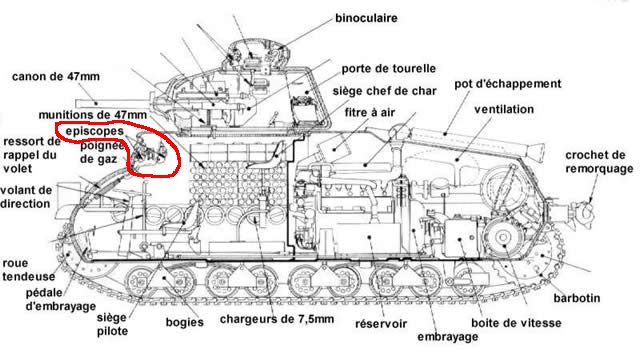
Here is a photograph with the episcope locations labeled above circled:
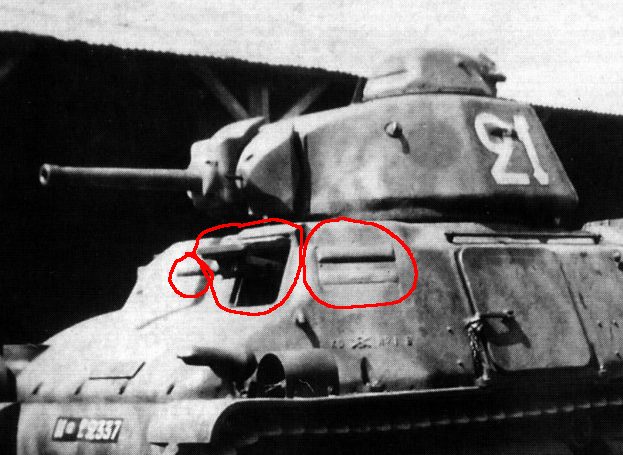
These episcopes were mounted behind viewslits in all forms of French tanks.
Many of these have been removed from vehicles seen in museums &
it's not common to see them intact.
Looking closer at the image above, you can see what appears to be something
mounted on the backside of the armor plate covering the driver view/hatch.
This is the episcope:
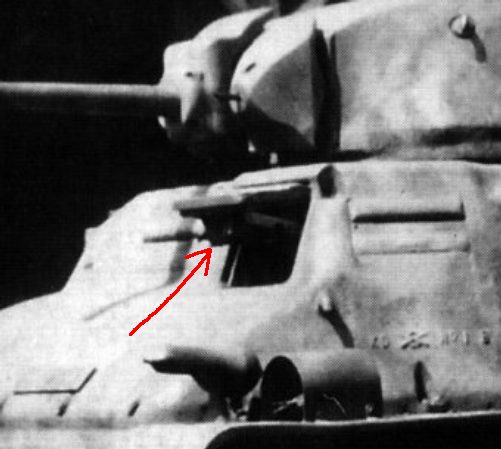
In fact, these entire panels which mount the episcope and have the viewslit
cut in them can be removed, shown here:
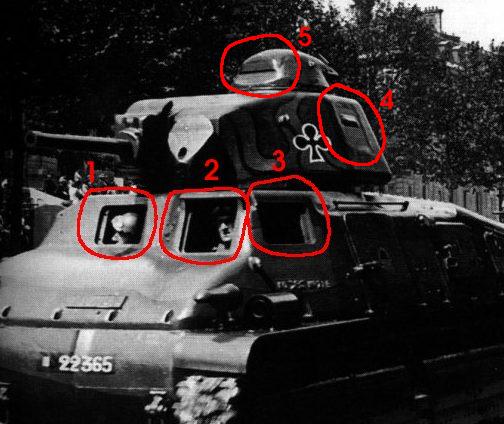
The above photo clearly shows the location of the three hull episcope mounting
panels, which can be opened and removed. I numbered them 1-3 for reference.
The turret/cupola episcopes are circled and numbered 4 and 5. A
sixth episcope on the opposite side of the turret is not visible.
Here is a pic of an S.35 in good condition, showing the driver's episcope
panel, #2, open.
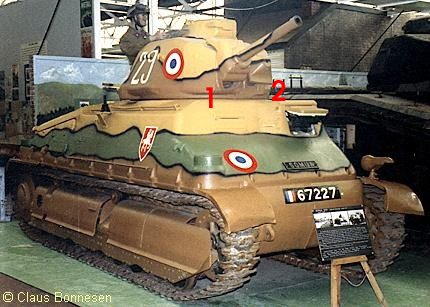
Here is a detail picture of this same tank's #2 episcope as seen from the
left side of the tank:
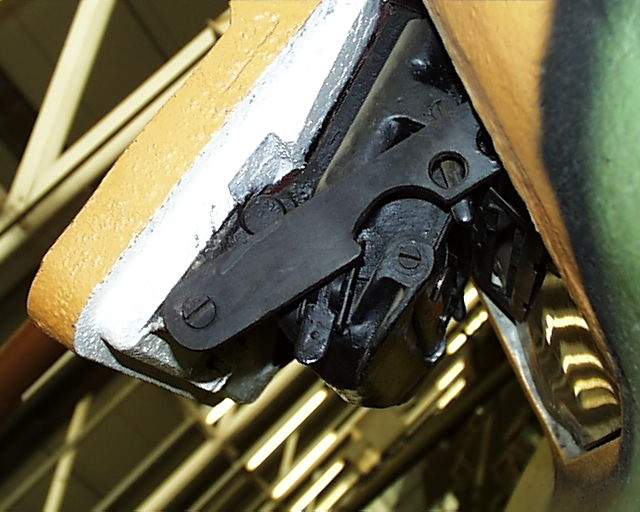
This gives a good idea of the complexity of the episcope device: clearly
not a simple viewslit, or transparent glass, as currently modelled. In
this detail view you can see what appears to be a levered mount connected
to a rotation point around an axis parallel to the horizon and the face of
the armor; this would allow for some vertical rotation and slight movement
of the episcope viewpiece up and down, thus allowing the creman to elevate
and depress his view (how much I cannot say). This type of episcope is the Chretien
episcope and is used on S.35, B.1, D.2 and later model R and H tanks. It has a
vertical FOV of 30.9 degrees and a horizonal FOV of 93.4 degrees (not yet known by
me is the amount of rotation in the vertical plane possible).
Episcopes were also present in the turrets of all French tanks. Here
are nice views of the eyepieces of the older Balland episcopes on the APX2 turret, a 2-man
turret mounting the 47mm SA35 gun (same gun as S.35/B.1) used on the AGC1 light
tank:
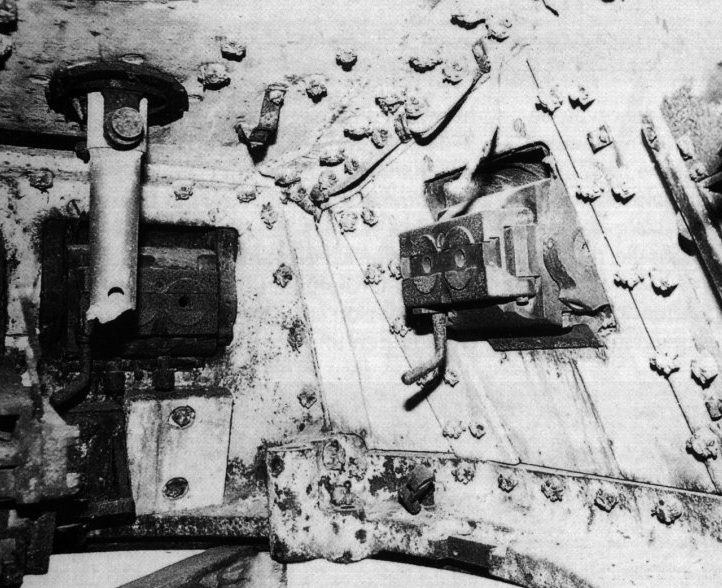
It's notable that these are a different style (this being an older,
less sophisticated version), but the ability to elevate and depress the view
is obvious.
The same Balland type of older episcope in the APX2 turret is also available in
older R.35's turrets (APX-R), seen below:
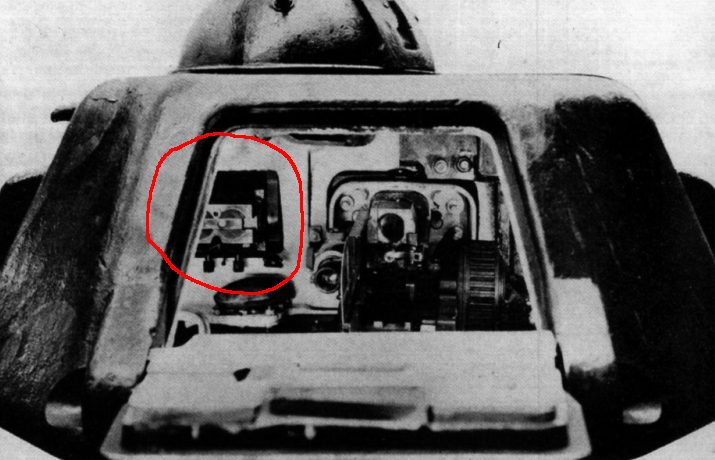
External view of this style of episcope:
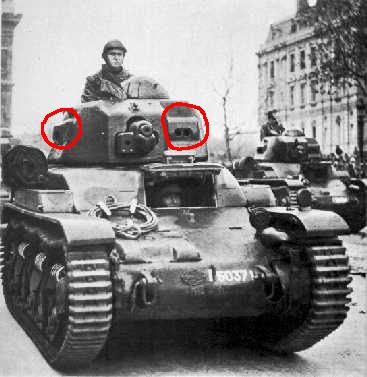
Here is a diagram of the original R.35 (and H.35) turret, clearly showing
episcope locations:
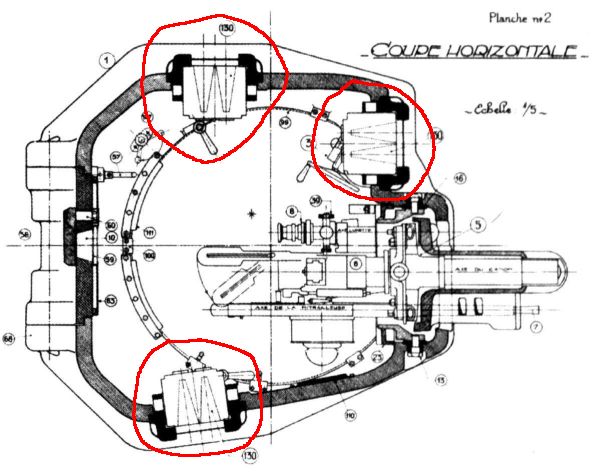
Because these panels are removable, the episcope was upgradable. Most
R.35s seem to have the newer Chretien style of episcope fitted (it's more difficult
to find pics with the "old" Balland style, particularly wartime photos), similar to those in the S.35 and B.1:
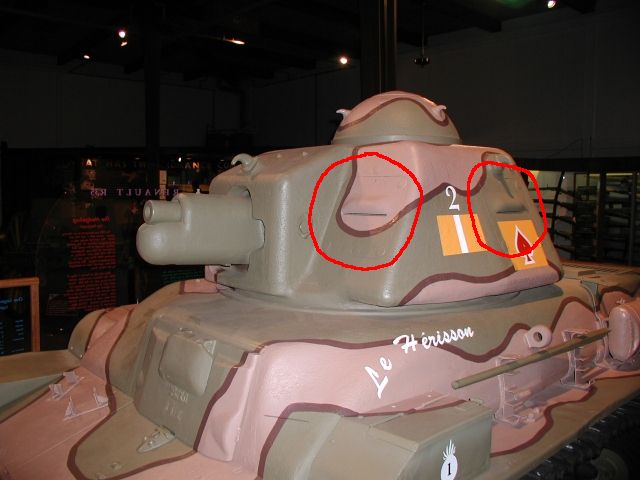
The APX-1 turret, fitted to the S.35 and the B.1, also have episcopes (of
the Chretien style) installed in two places in the turret, as well as in the rotating
cupola (along with a binocular position, but more on that later).
Here is the S.35 and B.1 turret (APX1) diagram showing, among other things,
the location of the episcope mounts:
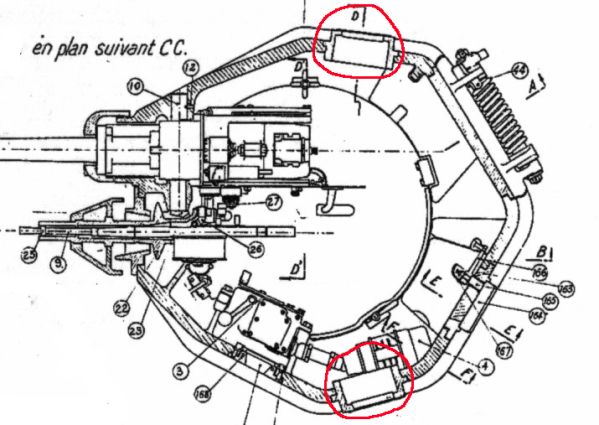
From the frontal view, we can see something else that's interesting: a semicircular
rotational mount in which some part of the episcope can rotate along a horizontal
axis up and down:
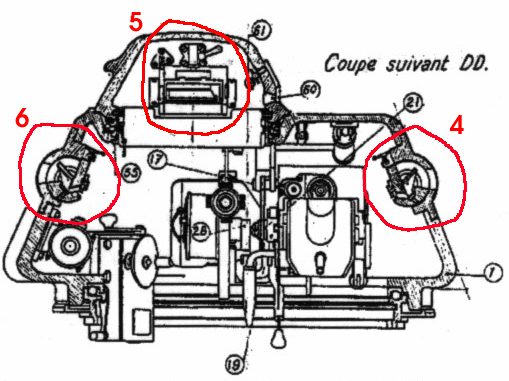
This is important confirming some part of the discussion of the ability
of the episcope to allow the crewman to move his view up and down behind the
safety of armor, but also shows how the episcope's cross-section is depicted
in this artists' drawings.
This goes on to confirm illustratively that an episcope, not a simple viewslit,
is present in the commander's cupola as well. Looking at the below drawing
of the same turret in the side view perspective, it's fairly obvious the
same device is depicted in the cupola as in the turret above:
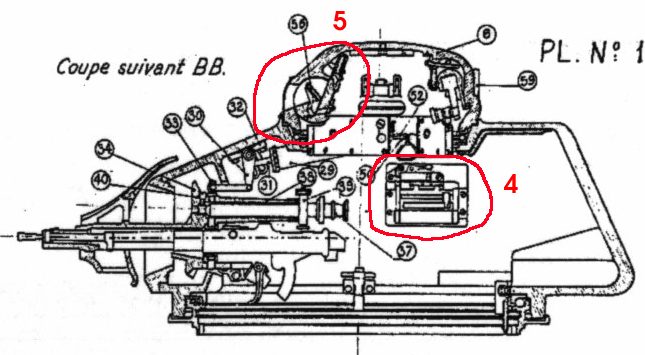
So, the APX1 turret/cupola and it's episcope locations are shown below transposed
on the original photograph:
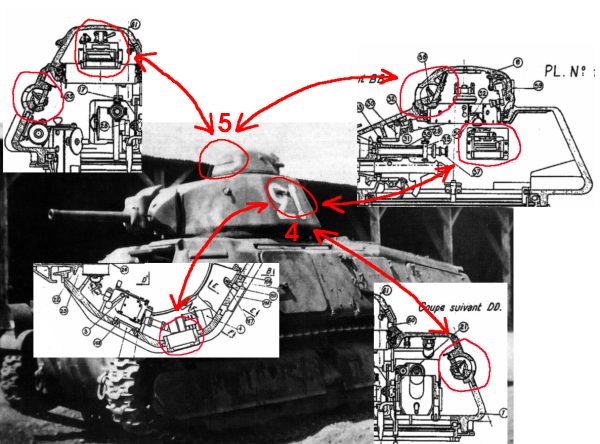
To model the basic episcope in WWIIOL, it seems fairly easy: when the crew
position is 'fixed' to the forward view via the "gunsight view" toggle, increase
the FOV such that the "outline" of the viewslit is no longer obstructing the
driver's view. This might provide a similar view to the forward driver
view in the Matilda II. An additional feature of the episcope is the
ability to pan up and down; this could be accomplished with auxiliary keys
such as "I-K" to move the view up and down.
The question now becomes "how do we model the other episcopes in WWIIOL"?
In the driver's position there ought to be a way to view out the slit
to the left of the driver; this could be extremely useful. Because the
driver already has an "instrument view" and "gunsight view" toggle occupied
in that position, how can it be done to model a third view position? Another
key to toggle between episcope views available to that crewmember?
The Binocular view: the two-headed cupola
While the APX1 (S.35, B.1) cupola rotates, it appears that it's normally
"stowed" position is with the cupola episcope facing forward (perhaps the
internal gear arrangement made this more comfortable? Perhaps it locks
down in this position?). As labeled in the initial diagram, there is
a binocular position in the commander's cupola facing to the rear, in the
opposite direction of the normal cupola episcope position and thus the direction
of the turret gun:
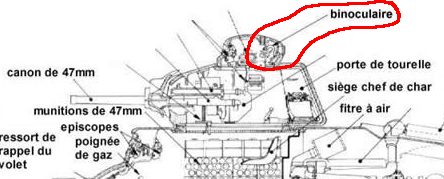
Taking another look at our diagram above, we see where the binocular viewslit
is in the cupola:
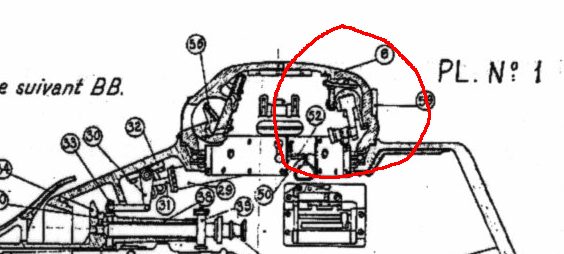
If we zoom in a bit, it's easier to illustrate that the optics here are
of an offset/periscope (path from eyepiece to lense makes two 90 degree turns)
nature. The French seem to have been particularly concerned with the
possibility of an enemy projectile passing directly through any vision orifice
in the tank's hull and instantly killing the crewman using it.
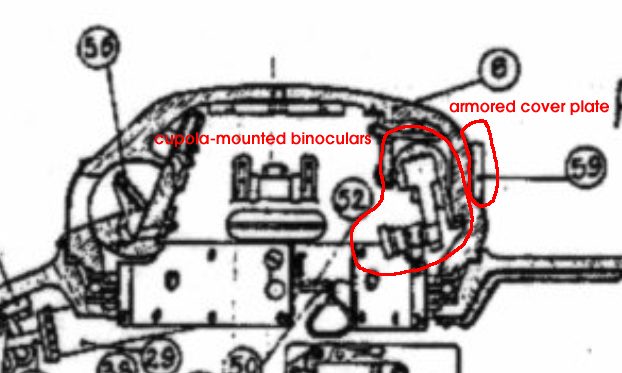
It can also be seen how this is partially modelled in WWIIOL: there
is indeed a small armor plate in the cupola that can be raised and the crewman
can peer out. Unfortunately, he has no magnification to this vision,
and it is fixed to a completely horizonal view and at the mercy of the angle
of the ground on which the tank is travelling.
Here is a rare photo of an S.35 with it's cupola rotated (to the right)
and it's normally rear-facing periscope and armored cover open and facing
the camera. It's clearly visible that there are two lenses exposed
when this armor plate is opened. Compare this turret view with the
"normal position" view just below it:
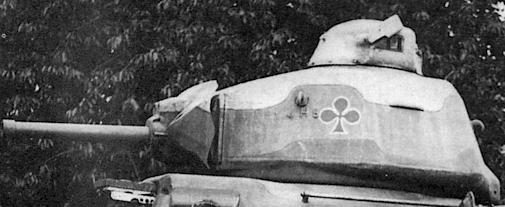
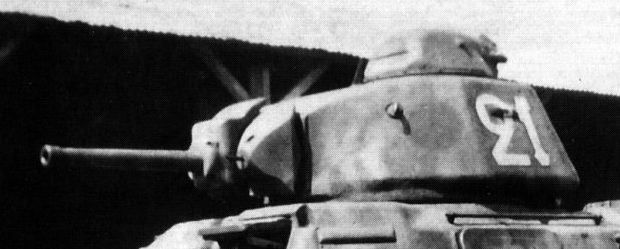
The original manual for the turret describes this as a "telescope" sight, which
has a 4x magnification and a field of view of 9.9 degrees as documented in German
operator manuals for captured French equipment. Not described is the
amount of rotation possible in the vertical plane.
Currently in WWIIOL there *is* a binocular position that the turret gunner
can use. The mechanics of this binocular position are modelled correctly:
zoom, and the ability to raise/lower the view a good but limitted amount.
However, it's incorrectly tied to opening the *rear turret hatch*, making
the viewer extremely vulnerable, and rotates with the turret rather than
the cupola (which rotates *much* slower than the cupola does). This
is a huge functional modelling problem, seriously compromising the usability
of the binocular position.
To fix this functionality, all that is needed is to tie the existing binocular
view game mechanics to the cupola position (#2) rather than the gunner position
(#3) and voila! It will work as it should.
Ironically, a binocular ability used to exist in the cupola position on
all French tanks, but this was removed when this functionality was added
to the turret gunner position - now with the correct ability to elevate the
binocs, but incorrectly tied to the open hatch on the turret and the turret's
slow rotation.
To model the forward facing episcope in conjunction with the rearward facing
binoculars in the cupola I am open to suggestions. I don't know how
flexible the vision code is in WWIIOL for crew positions; it would seem there
could be some option such as using the "gunsight view" for the binocular view,
and the "instrument view" for the episcope facing the opposite direction.
There exists another inability: that of the turret gunner to open the hatch
and ride on it, using a pair of personal/standard binoculars to scan the battlefield
quickly and less restrictively. That can be addressed later & is
also needed -- this tied to the turret gunner/hatch opening -- but that is
for another day :)



















